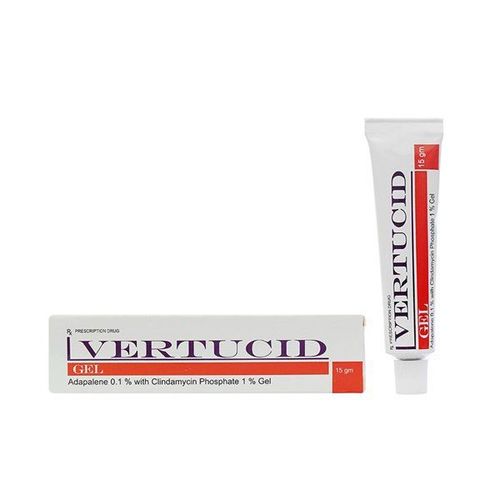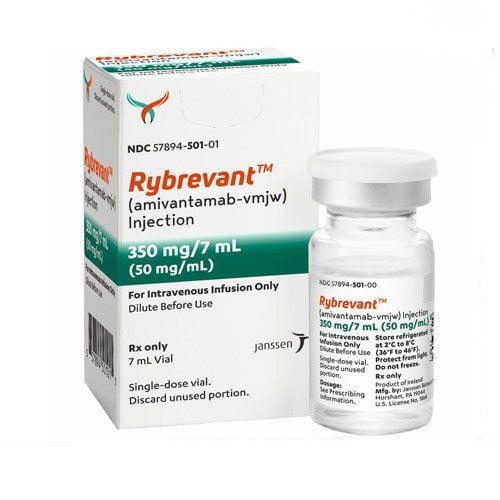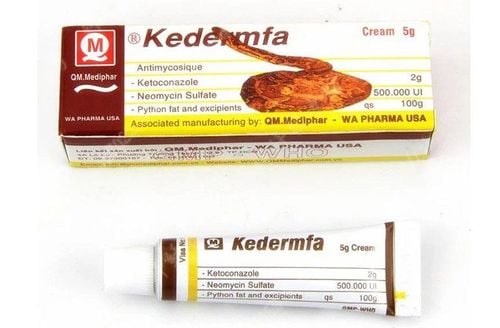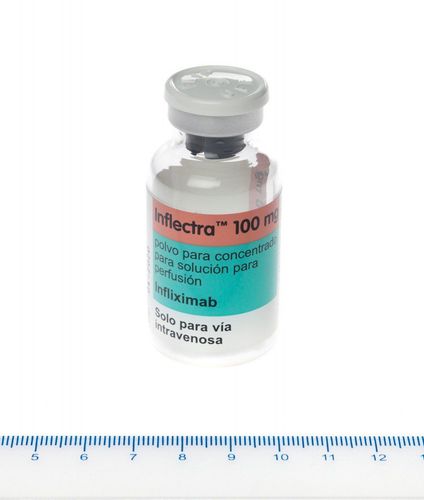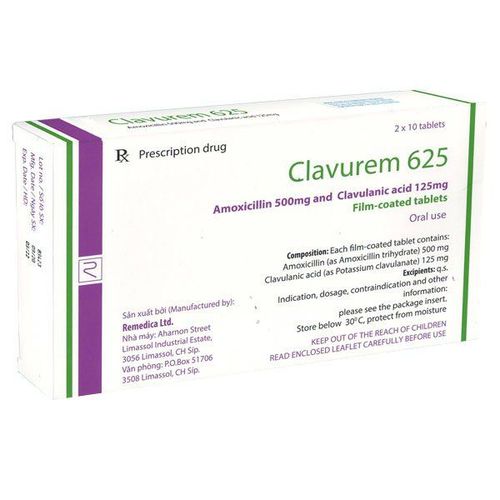This is an automatically translated article.
Azalovir is a drug that is prepared in the form of a topical tube, used to treat herpes skin diseases on body areas: skin, lips, .... Knowing well information about the drug makes treatment easier. easier.
1. What is Azalovir?
Azalovir has the main ingredient Aciclovir 5%, which belongs to the group of drugs against infections, parasites, antifungals, antivirals. The drug is prepared in the form of aluminum tubes of 5 grams, which is a product of U Square Lifescience Pvt., Ltd. - India. Azalovir is indicated for the topical treatment of both primary and recurrent herpes simplex infections. It is used for both lip and genital herpes.2. What are the uses of Azalovir?
2.1 Pharmacodynamic properties of Azalovir The drug Aciclovir is a pharmacologically inactive substance. After entering cells infected with herpes simplex virus types I and II (HSV I & HSV II) or varicella-zoster virus (VZV), aciclovir is converted to a viral inhibitor. Conversion of aciclovir is catalyzed by the viral HSV- or VZV - thymidine kinase. Human thymidine kinase does not efficiently utilize aciclovir as a substrate, thus toxicity to mammalian host cells is low.
In infected cells, aciclovir is phosphorylated by viral thymidine kinase to aciclovir monophosphate, which is further converted by cellular enzymes to aciclovir triphosphate. Aciclovir triphosphate has a greater affinity for viral DNA polymerase than host cell DNA polymerase and thus selectively interferes with viral enzymes by inhibiting viral DNA replication. Aciclovir is also incorporated into viral DNA by viral DNA polymerase, leading to chain termination, because aciclovir lacks the 3'-hydroxyl group, preventing nucleotide addition by the 3'-5'- bond.
In severely immunocompromised patients, longer or repeated treatment with aciclovir may result in the selection of viral strains with reduced susceptibility. As a result, these patients no longer responded to treatment with aciclovir. Most clinical isolates with reduced sensitivity show relative deficiency of viral thymidine kinase. However, strains with altered/different viral thymidine kinase or DNA polymerase have also been reported. In vitro expression of HSV isolates can also lead to the development of less susceptible strains. The relationship between the in vitro determined sensitivity of HSV-isolates and clinical response to treatment with aciclovir is unclear.
2.2 Pharmacokinetic properties of the drug Azalovir Absorption and plasma concentrations
Aciclovir penetrates the skin. Concentrations in the skin are higher than the minimum inhibitory concentration (MIC) in tissue at steady state. Following topical application of aciclovir, plasma concentrations of aciclovir cannot be determined.
As plasma concentrations of aciclovir after topical application are below the limit of detection, no pharmacokinetic studies of topical aciclovir have been performed. The following data are therefore based on data following oral or intravenous administration.
Binding to plasma proteins is reported to range from 9 to 33% as a function of dose. The mass of distribution at steady state in adults is 50 ± 8.7 1 / 1.73 m 2 , or 0.7 1 / kg.
Metabolism and excretion
Two metabolites can be identified in the urine of patients with normal renal function after a single dose of 14 C-aciclovir: 9-carboxymethoxymethylguanine (2-4% of the dose). ) and 8-hydroxy-9-(2-hydroxyethoxymethyl)guanine (<0.2% dose). Subjects with normal renal function excrete 62-91% of the unchanged aciclovir dose and 9-14% as 9-carboxymethoxymethyl guanine via the kidneys.
Aciclovir is eliminated primarily by the kidneys, mainly by glomerular filtration and to a lesser extent by tubular secretion.
In vitro and in vivo studies of aciclovir cream and aciclovir ointment compared with aciclovir were performed to determine the bioavailability of aciclovir in human skin. In vitro studies used human skin biopsies, while bioassays used human skin grafts in mice or were performed on human eyes (3 patients). The following transdermal concentration gradients appear for both topical and oral aciclovir: stratum corneum -> epidermis -> dermis. There was no difference in concentration between the skin cream and the ointment.
On average, the upper layers of the epidermis showed a 48-fold higher concentration after topical application of aciclovir ointment or cream than after oral administration, but drug concentrations in the basal epidermis - the site of viral infection herpes - is 2 to 3 times lower after topical use than after medication.
On a continuous basis of absorption, concentrations increase as a function of time (higher drug concentrations are found 48 hours after topical dosing compared to 24 hours after topical dosing). Therefore, a short dosing interval seems reasonable for the topical treatment of herpes simplex virus (HSV) infections.
2.3 Contraindications of Azalovir Drugs Patients who are allergic to any component of Azalovir Topical Drugs Do not use in immunocompromised patients Not for ophthalmology Side effects of Azalovir may be as follows: :
Immune system disorders Very rare: Immediate hypersensitivity reactions including angioedema and urticaria Erythema Contact dermatitis after application. When sensitization tests have been conducted, the reactants have often been shown to be the cream rather than the active ingredient (aciclovir) 2.4 Special warnings and precautions for use In severely immunocompromised patients (eg, AIDS patients or those receiving bone marrow transplants) should consider oral administration. Such patients should be encouraged to consult a physician regarding the treatment of any infection,
People with Cold Sore must avoid transmitting the virus especially when lesions are present. is active. The cream should not be applied to mucous membranes (eg, in the oral cavity, eyes or vagina), as local irritation may occur. Special care must be taken to avoid contact with eyes.
Excipients of propylene glycol in skin creams may cause skin irritation. Excipients cetyl alcohol may cause local skin reactions (eg, contact dermatitis). Only recommended for cold sores on the lips and face. Aciclovir cream contains a specially formulated substrate and must not be diluted or used as a substrate to be combined with other medications. Pregnancy: Aciclovir should be used during pregnancy only when the potential benefit outweighs the potential risk to the fetus.
Lactation: The amount of drug excreted in breast milk after topical application has not been determined, but the possibility of excretion into breast milk following topical application is minimal. Women who have herpes near or on their breasts should stop breastfeeding. Use in children: The safety and efficacy of aciclovir in children < 12 years of age have not been established.
3. How to use Azalovir effectively
3.1 Directions for application to both adults and children: Treatment should be initiated as soon as possible after the onset of infection, ideally during the pre-existing period or when new lesions appear.
Should apply a thin layer of cream to the infected skin and adjacent skin 5 times daily, 4 hours apart during the day, do not apply at night.
Treatment should be continued for 5 days, followed by another 5 days of treatment if the wound has not healed.
Patients should wash their hands thoroughly before and after applying the cream, avoiding unnecessary rubbing of the lesion or touching the wound with a towel, to avoid aggravating or transferring the infection.
3.2 Overdose An overdose is unlikely, if the cream is applied topically and as prescribed. There have been no reports related to an overdose of aciclovir cream. There will be no adverse effects if you eat the entire contents of a 20g tube of cream. Doses of 800mg five times daily (4g daily), have been used without adverse effects. Single intravenous doses up to 80mg/kg have been administered unintentionally with no adverse effects. However, accidental, repeated, oral overdose of aciclovir over several days has resulted in gastrointestinal (nausea and vomiting) and neurological effects (headache and confusion) ). Aciclovir is permeable.
The uses of Azalovir hope to give you the information you need to make the treatment more effective. To ensure your health, before taking the drug, you should consult with your doctor or pharmacist to make the medication more effective.
Please dial HOTLINE for more information or register for an appointment HERE. Download MyVinmec app to make appointments faster and to manage your bookings easily.




